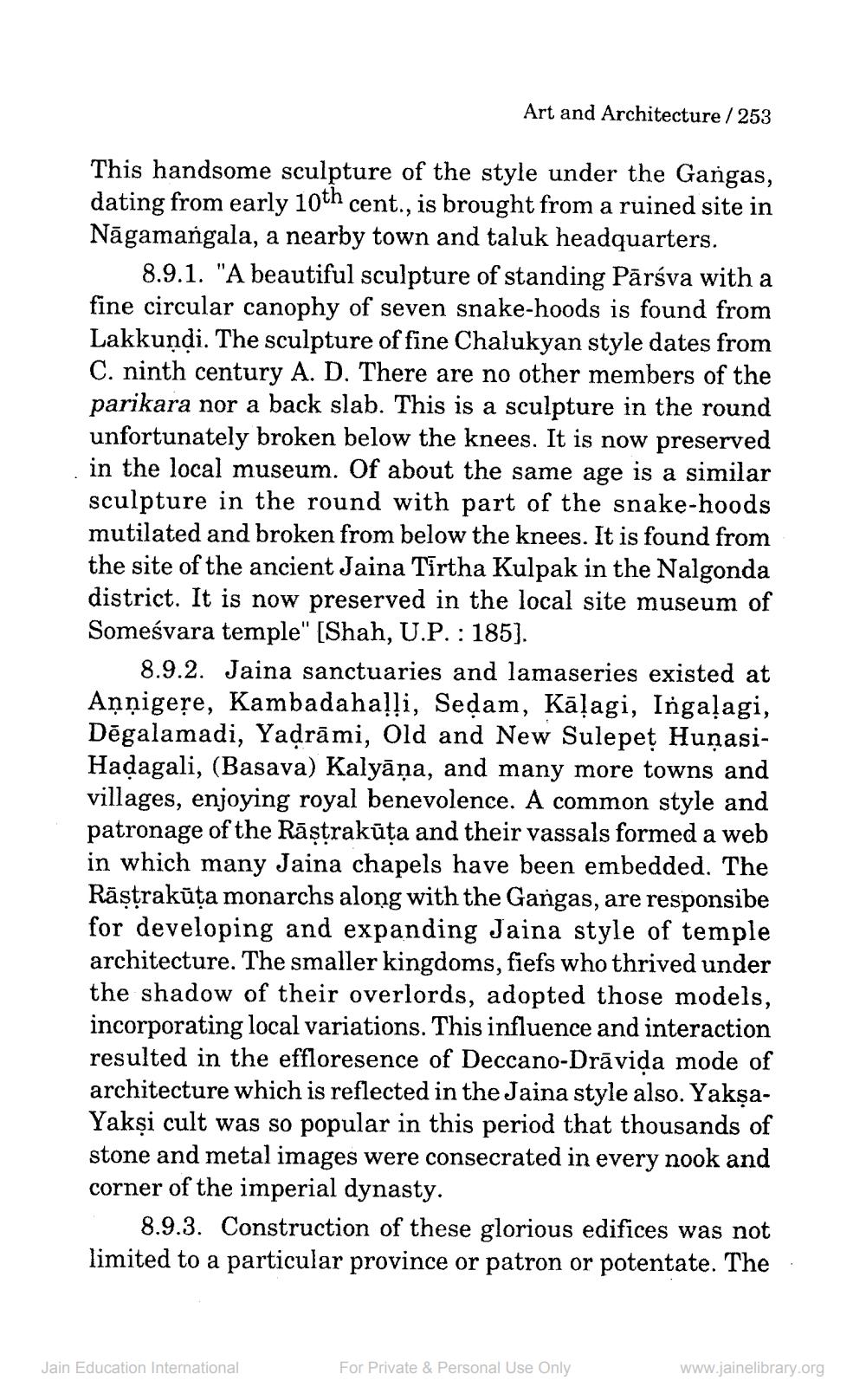________________
Art and Architecture/253
This handsome sculpture of the style under the Gangas, dating from early 10th cent., is brought from a ruined site in Nāgamangala, a nearby town and taluk headquarters.
8.9.1. "A beautiful sculpture of standing Parsva with a fine circular canophy of seven snake-hoods is found from Lakkundi. The sculpture of fine Chalukyan style dates from C. ninth century A. D. There are no other members of the parikara nor a back slab. This is a sculpture in the round unfortunately broken below the knees. It is now preserved in the local museum. Of about the same age is a similar sculpture in the round with part of the snake-hoods mutilated and broken from below the knees. It is found from the site of the ancient Jaina Tirtha Kulpak in the Nalgonda district. It is now preserved in the local site museum of Someśvara temple" [Shah, U.P.: 185].
8.9.2. Jaina sanctuaries and lamaseries existed at Annigere, Kambadahalli, Seḍam, Kālagi, Ingalagi, Dēgalamadi, Yaḍrāmi, Old and New Sulepet HunasiHaḍagali, (Basava) Kalyāṇa, and many more towns and villages, enjoying royal benevolence. A common style and patronage of the Rāṣṭrakūṭa and their vassals formed a web in which many Jaina chapels have been embedded. The Rāṣṭrakūta monarchs along with the Gangas, are responsibe for developing and expanding Jaina style of temple architecture. The smaller kingdoms, fiefs who thrived under the shadow of their overlords, adopted those models, incorporating local variations. This influence and interaction resulted in the effloresence of Deccano-Dravida mode of architecture which is reflected in the Jaina style also. YakṣaYakşi cult was so popular in this period that thousands of stone and metal images were consecrated in every nook and corner of the imperial dynasty.
8.9.3. Construction of these glorious edifices was not limited to a particular province or patron or potentate. The
Jain Education International
For Private & Personal Use Only
www.jainelibrary.org




